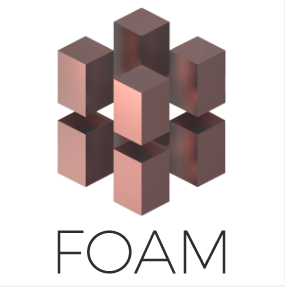I'm super excited to introduce a project that has been ongoing for two years and is coming out of stealth mode. Before we get into the details on the project, it's helpful to review protocols and some basic blockchain concepts.

HTTP, SMTP, and "mapping" the Internet
When the internet was young, computers required a shared way to communicate. A protocol is a bit like a specialty language might be as used by humans. For instance, carpenters have certain terms they use, just as doctors do or even sailors. Each group uses a shared language that is designed to enhance precision and clarity within their given profession.
Computers also use protocols when talking to one another. Some examples of this are HTTP, which is used when accessing the internet via web browser; SMTP, which is a protocol that helps deliver emails to the right recipients, or SNMP, which is a protocol used for building a computer network.
For the most part, these protocols are invisible to us, and we only see the applications that take advantage of them. For instance, we use Google Chrome or the Brave browser to access our favorite websites, while gmail or Outlook give us access to our email. SNMP is virtually invisible to most of us unless we've worked on a computer network bigger than the one router setup most of us use at home.
These protocols are free and unseen; they've made our lives wonderful, yet they're generally unknown to the populace at large. On the other hand, the applications we use that take advantage of them are household names to even the least technical people. Applications helped us move from the early days of the internet offering straightforward sites such as, "Shopping malls, but on the internet" to Wikipedia, which was something unthinkable before all those protocols were used and became interoperable.
Mapping the real world using legacy protocols: Google Maps, OpenStreetMap protocol
Let's take a look at a legacy protocol in another area: geography. Protocols in geography have focused on unique identification for places. We tend to identify places using postal codes or latitude/longitude, and the internet has given us an amazing amount of information to help us find where we need to go. GPS devices allow extremely fine location services which were only available to the military a couple decades ago, giving rise to people geocaching and exploring new terrain. Vehicle navigation and traffic redirection has improved as a result of this as well.
The two big players in this space have been Google Maps and OpenStreetMap (OSM). OSM is a protocol that was developed by an army of enthusiasts whose work rivals the number 2 company (pdf alert) in the world. Companies like Apple and non profits such as Wikipedia once used Google Maps, but now use OSM. Since OSM is as good (better?) than Google Maps, but free, it makes sense for companies to use APIs that integrate it.

Visualizing historical data entered into OSM
Despite the passion in this space, there is no "ownership" of OSM, the volunteers who spent their time making the maps are not paid when the protocol is used by a third party taking advantage of the API. In other words, the free work the volunteers gave to map out the world using OSM can be leveraged by a company and they won't see a dime. Furthermore, the incremental improvements in quality of life due to map protocols seems underwhelming, as if there might be something more there, but it hasn't quite been discovered yet. Is there a killer app-a twitter level game changer-that we have yet to see come from this space?
What if there was a way to bring value to geospatial protocols?
Along came the blockchain
When bitcoin was released in 2009, it slowly became an internet protocol with the purpose of transmitting value from node to node. One can think of bitcoin the same way one thinks of http-bitcoin allows different computers to talk to one another using the language of cryptography. The information they exchange is done in such a way that it removes the need for centralized servers. It is a peer to peer network, and a large group of privately owned PCs were able to start a revolutionary new asset class that is now worth over $80 billion. Because there is no central server that "runs" bitcoin, it is incredibly difficult to attack it using the current denial of service attacks that work on centralized applications.
Other blockchains came along and tweaked or improved what bitcoin started. Ethereum, the most promising of these, bills itself as a world computer, that runs programs without the need for a central server. The short term implications of this have been realized in token sales and apps that will benefit from the protection a distributed computer will offer-they cannot be shut down by hostile actors. The long term implications will take years to flesh out. Just as Wikipedia wasn't imaginable in the early years of commercial internet, the real power of blockchains and distributed ledgers will not be known until years.
The major difference between blockchain protocols and legacy protocols is that the former are tokenized, and therefore have economic incentives built in, whereas the latter find their economic incentives only when they are matched with an application. In the past, it was the applications that made the money-Google earns ad revenue when you search using the HTTP protocol and your web browser. With blockchain protocols, a token is required to use the service, thereby creating demand for the protocol itself.
For example, the Golem Network Token (GNT) was sold to buyers to help bootstrap the development of a distributed computer network that will act as a distributed supercomputer used to do graphic rendering, a computationally intensive process. The plan is for people to lend their PCs to the Golem network when they're not being used, and in return, they'll receive GNTs from users of this system. It is hoped that by distributing the load to a virtualized parallel processor, Golem will offer a service that is better (either cheaper, faster, or both) than the current supercomputers that are used for this.
Another token is called the Basic Attention Token, or BAT. BAT will be used to act as a micropayment system that will facilitate better ad delivery to users, and it will also act as a payment for users who do not want ads when viewing internet content. The company behind this is called Brave, and you can already download their amazing browser on your PC or phone. A website can earn money through pageviews by accepting a small amount of BAT per pageview, rather than embedding annoying ads that eat up bandwidth and generally annoy users.
As you can see, the tokens provide incentives for both users and providers of the service. The token allows for a vast amount of speculators, graphic artists, advertising, and computing power providers to work together for a mutual benefit. Economic incentives align in unique and powerful ways when using blockchain technology...and we're just beginning.
Introducing FOAM

FOAM is an open protocol for geospatial data markets on the ethereum blockchain. From their website:
FOAM was founded in 2016 by Kristoffer Joseffson, Ekaterina Zavyalova (and) Ryan John King as a decentralized architecture office working on the design and production of technology and buildings for the next generation of cities. (Their) office is a decentralized network composed of an international team of architects, designers and software developers that have lectured, published and exhibited with major global cultural institutions.
FOAM is an ambitious project that is incredibly exciting, but it is so futuristic it takes a little time to really digest the vision of this project. I have begun a collaboration with FOAM to try to tease out some use cases, show how it may be used in the near and distant future, and really bring the ideas of the team to Steemit and the greater tech community.
You can start by taking a look at FOAM's website and signing up for their newsletter. Don't worry if it seems complex: I'll be drawing some of the examples out further over the next few weeks. There is also an upcoming ICO. I am not an investment professional, so my job is not to tell you how to make your financial decisions-you are responsible for doing your own due diligence. Instead, I hope to show you why the FOAM protocol will create incentives for geospacial data markets and make some predictions on what the future might hold for this exciting project.
Conclusion
Protocols drove the creation of the internet, but it is the applications on top of them that make money. OpenStreetMaps (OSM) is one example of a protocol that has been developed by an army of volunteers. The ethereum blockchain allows protocols to be tokenized and monetized, giving early buyers and token users to incentives to develop applications on top of them. FOAM aims to use the power of blockchains to tokenize geospatial data and revolutionize how it is used.
More to come in the following days. In the meantime, here is some further reading on protocols.
This article is the first in a series of active collaboration between the team and me. My voice and opinions remain independent.
Thanks man, you just outlined quite an interesting opportunity, with a lot of real world application and exciting potential for future growth.
It seems that they have a bold vision, with several uses, and active Devs. I found this little bit on their website;
Augmented Reality applications can be used to see and verify the locations of smart contracts in the real world. Games, advertising and loyalty programs for being in a certain location and tags of data can be tied into a coordinate.
Thanks for the info! Followed!
I agree, they really do have a bold vision that only the blockchain can make happen. Thanks for the comment and hope you enjoy the next article in the series, coming in a week or so!
Great article, what's your opinion on platin.io in comparison to foam? As far as I know, foam uses Beacon combined with LoRa, whereas Platin.io has no new for new hardware.
So much great information here. Thanks!
Where do you see Ethereum being price-wise by December?
No idea. I hope higher, but expect volatility.
I'm continually buying weekly for now.
Ah. I've heard that it might go to $1000 by then..
Would be great, but nobody can predict the future.